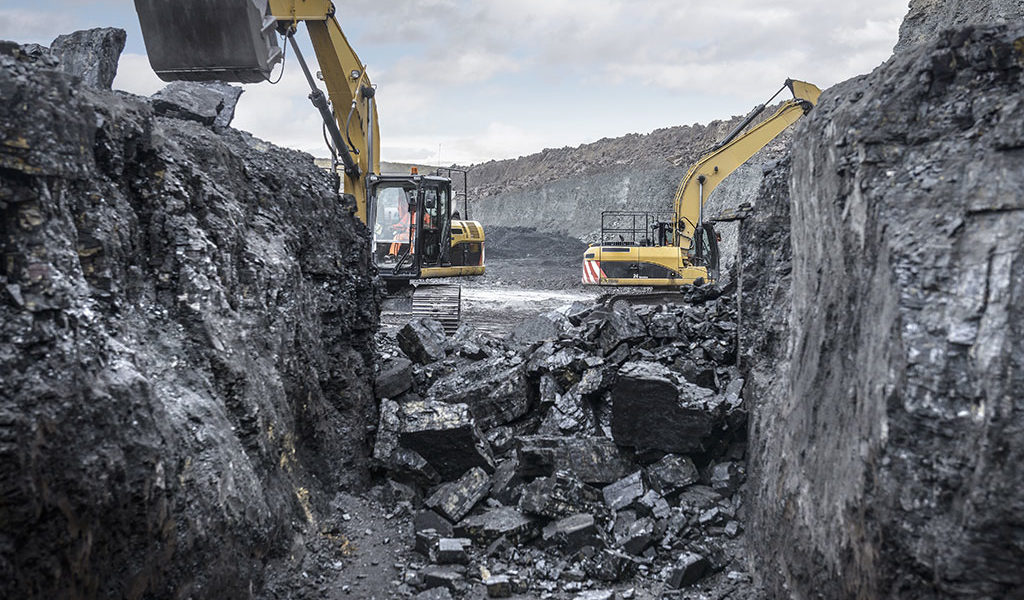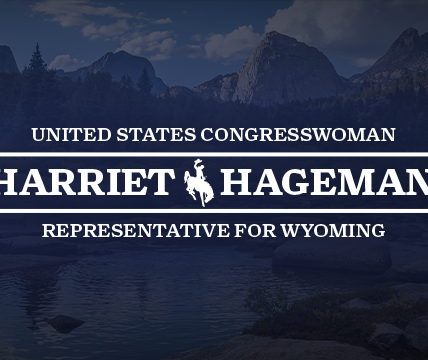By Greg Johnson
Gillette News Record
Via- Wyoming News Exchange
GILLETTE — Under the right circumstances, carbon under pressure produces diamonds. But the intense pressure from multiple fronts now squeezing Powder River Basin coal is crushing the industry.
Already struggling with weakening demand for U.S. coal, the nation’s largest coal-producing region also has been hit hard by the COVID-19 pandemic with historically bad results.
Through the first eight months of 2020, PRB production is nearly 25% below this time last year and hundreds of high-paying jobs have been lost.
While the last four months of the year may pick up some, it won’t be enough to salvage a 12-month production cycle that could see the basin produce less than 200 million tons of coal for the first time in three decades. It’s also likely more layoffs are on the way.
Through three weeks of August, the federal Energy Information Association shows coal production in Wyoming, mostly from the PRB in Campbell County, at less than 130 million tons. At the same time last year, it was 177 million, reflecting a 27% drop.
“Even if we were to match last year’s total for the rest of the year, we’d be looking at under 230 million tons from the Powder River Basin, which is still a lot less than the 266 million in 2019,” said Rob Godby, director of the Center for Energy Economics and Public Policy at the University of Wyoming College of Business.
That’s not likely, however, as demand for thermal coal continues to lag, pressured by continued low natural gas prices and the pandemic, which has caused a significant reduction in electricity demand, he said.
“The fact is, we’re not going to see coal exceeding what it did last year for the remainder of the year,” Godby said. “That’s just too much to ask for.”
What he calls a “best-case scenario” for Wyoming coal for the rest of the year is to maintain a pace that’s about 25% behind. It’s a significant improvement from the start of the pandemic when much of the nation was shut down.
“The rate we’re producing right now in the Powder River Basin, it’s looking like coming in under 200 million tons,” Godby said. “It’s pretty sobering.
“The only good news is it could be even worse. At one point, we were running 30% to 40% behind some weeks. Given that we’ve had weeks where we were 40% below last year’s production, that’s why we might think that as this year goes on, more layoffs are potentially likely.”
That could put the PRB on par with the bust of 2016, when local mines lost 851 jobs, or about 15% of the workforce. Production that year was down about 77 million tons, or 21%.
So far in 2020, the basin is down 568 jobs, or a little more than 12% of the workforce. That includes 80 furloughed workers at Navajo Transitional Energy Co.’s Antelope mine south of Wright who where laid off last week.
The numbers say more layoffs are likely to come, Godby said.
“You look at what’s going on in the national coal market, and coal’s never had a year like this,” he said. “It’s going to be the worst year the Powder River Basin has ever seen in terms of production decline.
“The question is how large of a production decline it’s going to be. We still have four more months of this year to go.”
Anyone hoping for coal to rebound to the point it’s a larger piece of the nation’s overall energy pie only has to look at what the producers are doing, Godby said.
Peabody Energy Corp. recently wrote down the value of its flagship North Antelope Rochelle mine near Wright by $1.42 billion.
“That was an admission coal is not going to come raging back,” Godby said. “Any argument that coal is going to come bouncing back should’ve been out of people’s minds when NARM took that reduction in value on that asset.”
As it has for many industries, the coronavirus pandemic has greatly impacted coal, which already was struggling, said Campbell County Commissioner Rusty Bell.
While PRB coal isn’t likely to ever to reach the 400 million-ton level of production it had from 2006-2011, even a return to pre-pandemic levels would be welcome at this point, he said.
“Everybody understands that in the energy market right now we need to get the country and the world back open again so we can get people using energy again,” Bell said.
A year from now, the PRB could be in a much better place if the nation can get a handle on the virus and open the economy to the point where energy is being consumed at higher levels, he said.
“Hopefully, a year from now we’re a half a year away from the COVID issue and the nation’s back open and we see where that levels off,” Bell said. “I don’t think anybody really knows where that is, though.”
He also said coal is a snapshot of a larger picture for Campbell County, which also has seen job losses in oil, gas and support businesses.
Layoffs are “probably much, much higher with coal, oil and gas and when you get to the service industries as well,” he said.
Along with natural gas and COVID-19, coal is being squeezed out by the accelerated emergence of renewable sources of energy like wind and solar generation.
In April, renewables out-produced coal for electricity generation in the United States every day of the month. In May, they beat coal on 28 of 31 days.
Less than a decade ago, coal accounted for 50% of the nation’s electricity generation. Now it’s about 17%, a plunge nobody saw coming as quickly as it has, said Travis Deti, executive director for the Wyoming Mining Association.
“The government-subsidized build-out of renewables have taken the market share from the coal industry,” he said.
Producers are at a breaking point, Deti said, adding that the main reason the loss of jobs hasn’t kept pace with the drop in production is because cutting people is a last resort for most companies.
“Every one of those operators are doing everything they can to keep those jobs and keep people employed,” Deti said. “But production drives employment and that’s just a tough thing to deal with.”
As long as the pandemic continues to stifle the economy, the coal industry won’t find much relief, he said.
“The underlying gorilla in the room right now is we’ve got to open up the economy, and opening it up nationwide and getting people using electricity again,” Deti said. “But no one knows when that’s going to happen.”
Renewables have been built out to the point that they have a strong foothold as a provider of power to the national grid, Godby said. Along with the continuing retirements of coal-fired generation, it doesn’t look good for coal to regain its market share.
“Renewables have been added to the grid and this has been one of their best years, if not their best year,” he said. “What that means is once those renewables are on the grid, less coal is going to be needed.
“As long as we have natural gas prices as low as they are, that’s not going to relieve the pressure.”
While renewables may be growing, one only has to look west to see that they can’t handle the level of power generation to replace coal, Bell said.
This summer, parts of California have experienced power blackouts and rolling blackouts and brownouts because its electricity supplies were taxed. Because of laws the state has to limit coal-produced electricity, millions of people have intermittently been out of power.
“I think that’s an interesting spot to be in where we don’t turn the power on because we don’t want to use that (coal) source of energy,” Bell said. “I don’t think at this point anybody’s just going to write off coal.”
Whenever that time comes, people shouldn’t expect coal to rebound anywhere close to where it’s been in the past. Years of low natural gas prices and COVID-19 have pushed its transition into the fast lane, Godby said.
“Right now, the level of coal production is what most of us expected we’d be at 10 years from now,” he said. “It’s basically been accelerated a decade.
“With the unprecedented low levels of gas prices and the expansion of renewables, it’s come much sooner and has hurt much more than most of us could’ve thought would happen.”
The real dilemma for Wyoming and the Powder River Basin is how to move beyond a dependence on coal and oil revenues, Godby said. It’s a question much easier to ask than answer.
It’s also shouldn’t be considered a doom-and-gloom scenario. Looking around Wyoming, the massive impact coal has had on the Cowboy State is evident and continues to pay off.
“Every new school in the state was pretty much built with coal money,” Godby said. “Every school kid in the state can thank coal for the quality of education they’re still getting.
“The coal sector has a lot to be proud of, but as with everything else in life … the sun rises and the sun sets. We should be thankful and grateful for the benefit fossil fuels have brought us, but the unfortunate thing is we’re not going to bring those times back.”
Bell agreed, saying that the nearly $2 billion coal has contributed to public education over the past decade is something to be thankful for.
“For all of Wyoming, look at the facilities coal’s built,” he said.
An immediate impact of the pace of coal’s decline is the human toll, Godby said.
“The unfortunate reality is it looks like those stable, well-paying jobs that are the cornerstone of the Powder River Basin economy are disappearing much more quickly than expected and forcing communities to transition much more quickly than they thought,” he said.
In the meantime, efforts to diversify the state’s vast carbon resources must continue, Bell said.
“We’re sitting on billions of tons of carbon and the things that are above and below it — like the rare earths — so to say we can’t use that resource in some way is crazy,” he said.
In the end, coal isn’t Wyoming’s greatest asset, Godby said. It’s the tough, hard-working and resilient people who live here.
“Wyoming still has a lot to offer the country and the world,” he said. “It may not look like what we’ve been used to for the last 50 years, but we need to be having those conversations and they can be positive.”








